We’ll get started by learning some background on what a mode is and the theory behind Phrygian.
I promise it will be painless (and maybe a little fun); let’s get started!
The topic of Music Theory is vast and complicated. It doesn’t have to be complicated and I’ve created a resource that goes through everything you need to know to be a competent musician, songwriter, and producer. I would highly recommend checking out that article as a primer to the rest of this article and other theory posts I have on this site. It’s titled “The Ultimate Guide on Music Theory for Musicians Who Dislike Theory.“
What is a Mode?
A mode is a series of notes based on a musical scale. Most modern songs use modes that are of the Major Scale.
There are seven different modes of the major scale, and each has its distinct sonic character. Using the proper mode in your writing can enhance the storytelling of your song and help the audience connect emotionally.
Modes pre-date traditional scales and are also known as church modes or greek scales.
For a full overview of all the modes please refer to my article titled “How Music Modes Enhance the Feeling in Your Songs.”
Are Modes Also Scales?
Technically no. A mode is the re-arranging of a scale’s intervals that creates a different sound. The notes in a mode will be the same as its relative major scale.
For example, if you play the notes of the C Major Scale but changed the tonic note to the second scale degree, you would be playing D Dorian.
Frequently people will call modes scales. Thinking of modes as scales will make it easier to grasp the concept of modes, even though music theory purists would say that this is incorrect.
Understanding the Major Scale is important for understanding modes. For more information on the Major Scale please refer to my article “The Major Scales: The Key to Great Songwriting.”
What is the Phrygian Mode?
The Phrygian Mode is the third mode of the major scale. Phrygian is dark, exotic, and mysterious.
It isn’t used often in pop music but can be heard often in hip-hop, metal, jazz, and film music.
The Phrygian Mode is used in Flamenco Music and can be referred to as the “Flamenco Mode.” However, in Flamenco Music, it is common to raise the seventh scale degree, which would no longer be a proper Phrygian Mode.
This raising of the seventh scale degree regarding Phrygian is also known as the “Gypsy Scale.”
What Scale Degree Does the Phrygian Mode Start On?
The Phrygian Mode would start on the third scale degree of the major scale.
For example, in the C Major Scale, if you counted up three scale degrees from the tonic note of C, you would land on the note of E. Now, if you played the same notes of the C Major scale starting on E, you would be playing in E Phrygian.
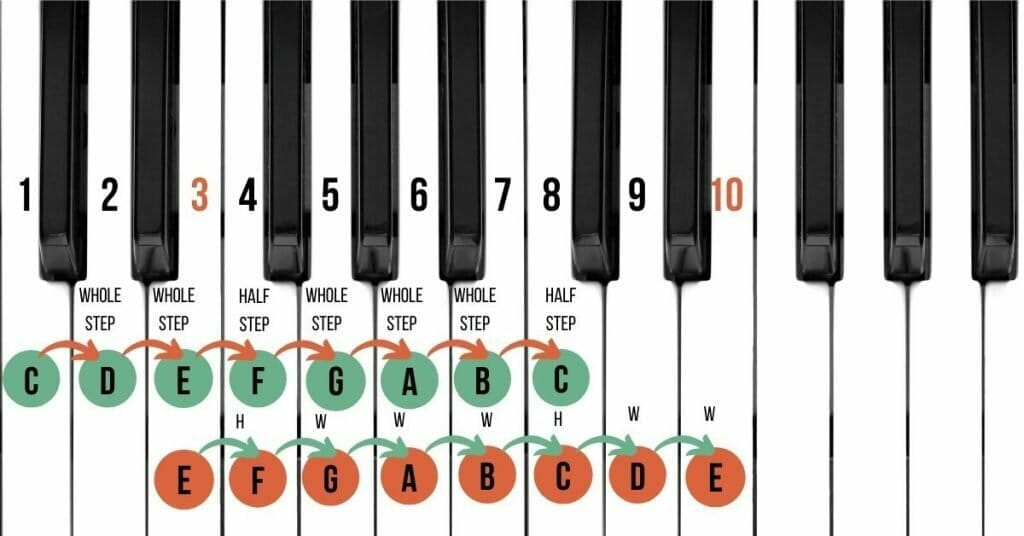
What Are the Phrygian Mode Intervals?
The Phrygian mode has the same interval pattern no matter what key signature you play.
The Phrygian Scale intervals (concerning the Major Scale) are:
| Interval | C Major Scale Notes | Interval | C Phrygian Notes |
| C | C | ||
| Whole Step | D | Half Step | Db |
| Whole Step | E | Whole Step | Eb |
| Half Step | F | Whole Step | F |
| Whole Step | G | Whole Step | G |
| Whole Step | A | Half Step | Ab |
| Whole Step | B | Whole Step | Bb |
| Half Step | C | Whole Step | C |
Is Phrygian Major or Minor?
The Phrygian Mode has a minor third interval making it a minor mode. This minor third is part of the reason why Phrygian has such a dark and unsettling vibe.
What is the Sonic Vibe of Phrygian?
Modes are like shades of colors. Some are brighter and more vibrant, while others are darker and more ominous.
Modes alter the major scale by adding sharps or flats to the notes of the scale.
When you sharpen notes, you brighten the major scale.
When you flatten notes, you darken the major scale.
The Phrygian Mode is the second darkest mode of the major scale (Locrian comes in first).
The characteristic note of the Phrygian Scale is the flattened second which gives this mode an “Egyptian” vibe. Also, because of this semitone jump up from the tonic to the second, there is an immediate tension at the start of the scale.
So Phrygian is an eerie, dark, mysterious, and exotic scale that creates a unique tension and uneasiness in the listener.
Write with caution when using Phrygian!
Phrygian Scale vs. The Natural Minor Scale
The Phrygian Scale is the same as the Natural Minor Scale (or Aeolian Mode) except that Phrygian has a flattened (minor) second.
So without the addition of this minor second interval, you are simply playing a natural minor scale.
Phrygian Scale vs. The Harmonic Minor Scale
The Phrygian Scale is the same as the Harmonic Minor Scale, except the Phrygian has a flattened (minor) second while the Harmonic Minor Scale has a raised seventh.
When you play between these two scales, you get the Gypsy Scale, and the Flamenco Mode sounds.
What is Phrygian Dominant?
Phrygian dominant is when you raise the third scale degree to make it a major third instead of the minor third of traditional Phrygian Mode.
The Phrygian Dominant has an even more exotic, middle-eastern vibe than standard Phrygian. Phrygian Dominant can be heard prominently in Dick Dale’s rendition of “Miserlou.”
How to Start Writing With The Phrygian Scale
Now that we’ve discussed the music theory behind the Phrygian Mode, let’s discuss how we can experiment with it in our songwriting.
The Chords of the Phrygian Mode
If you’re looking at best incorporating the Phrygian Mode into your songwriting, I would recommend starting with a Phrygian chord progression.
Remember, the Phrygian Mode is based on the major scale, so the chord structures (major, minor, and diminished) will be the same as its relative major, just in a different order.
| Chord | Chord Type |
| i | Minor |
| II | Major |
| III | Major |
| iv | Minor |
| Vº | Diminished |
| VI | Major |
| vii | Minor |
Guitar
Here’s a graph of all the Minor CAGED position scales in G Phrygian so you can practice adding this into your songwriting with a guitar.
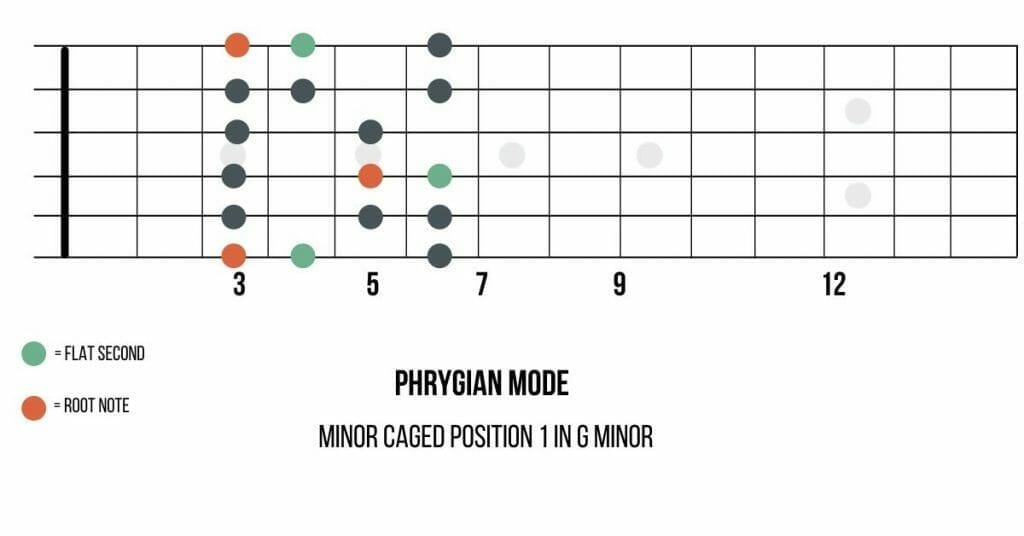
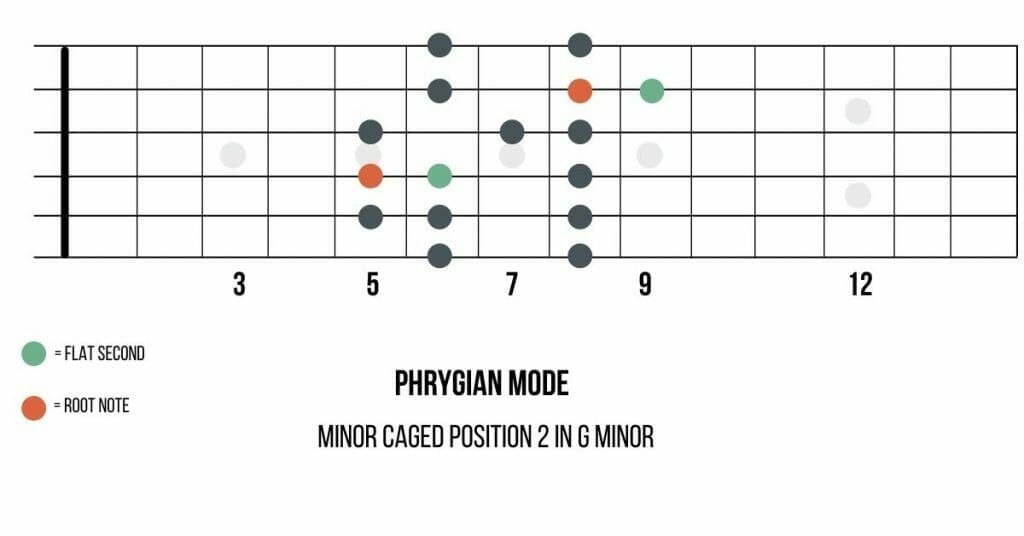
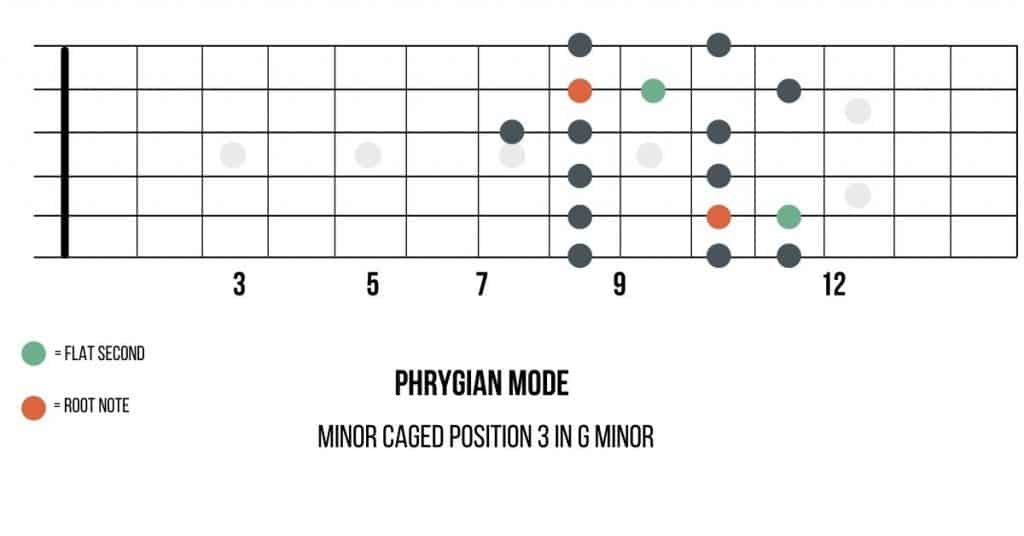
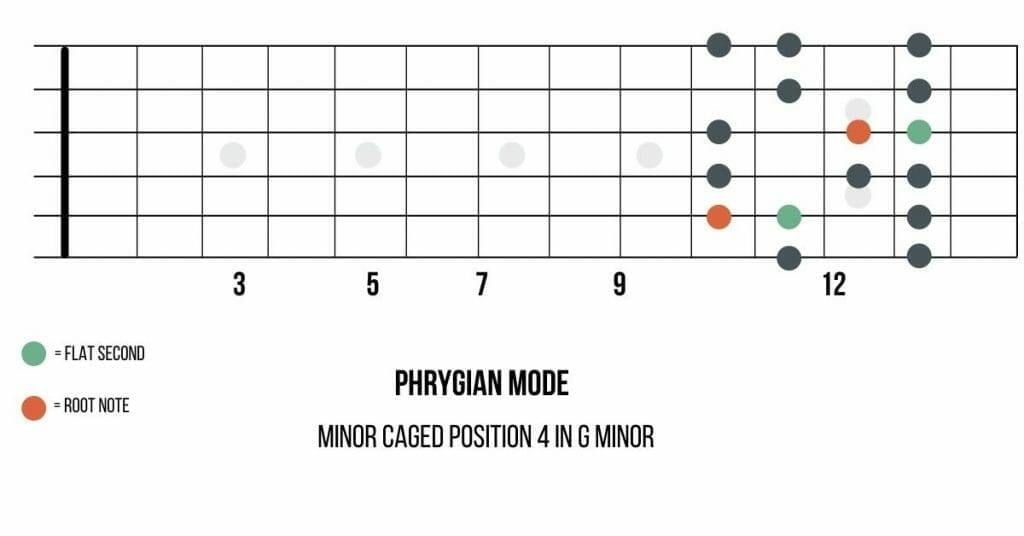
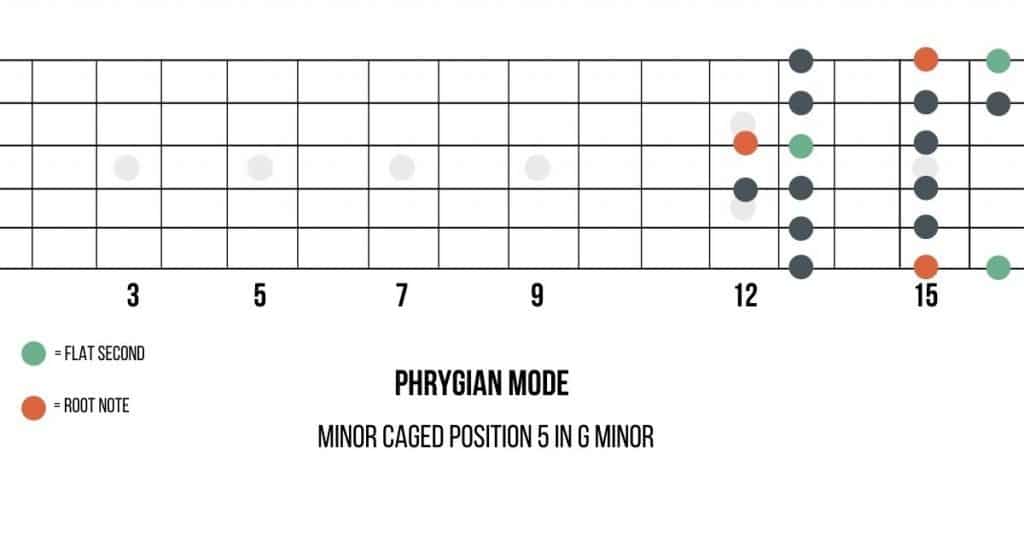
Using Phrygian Mode For Songwriting
While the Phrygian Scale isn’t used a lot in modern pop songwriting, it doesn’t mean that you should ignore it.
You can utilize its tense nature to create great drama in sections of your melody and chord progressions.
Here are a couple of tips to help you write your next song utilizing the Phrygian Flavor.
Establish the Tonic Chord and the Flat Second Chord
When writing melodies and chord progressions with the Phrygian Scale, you must establish your tonic.
Because you are in Phrygian and this is a minor mode, your tonic chord will be minor. However, the minor second interval from the tonic is what tells the listener you are in Phrygian.
Suppose you don’t establish your tonic concerning the flattened second. In that case, you could easily fall into the trap of modulating into a different mode or scale.
Remember, your playing the same notes and chords as the relative major scale. So if you are playing in E Phrygian, you could just as easily be playing in C Major.
Use the Diminished Five Chord
The five chord, the most dominant/stable in the major scale, is a diminished chord in Phrygian. Diminished chords are the least stable chord and are “passing chords” in chord theory.
Utilizing this chord in your progressions can add extra tension, darkness, and intrigue to your harmonies.
It’s good to understand chord harmony to best utilize these concepts. For a more in-depth look please refer to my article “Use Harmony in Music to Bring Vibrancy and Depth To Your Songwriting.“
Phrygian Mode and the Pentatonic Scale
The pentatonic scale is a five-note musical scale. It is prevalent in the blues genre, jazz improvisation, and creates “easy on the ears” melodies.
There are major pentatonic scales and minor pentatonic scales.
So which pentatonic type should you choose when adding the Phrygian mode?
The music theory behind the major and minor pentatonic scales is that you should play the major pentatonic over major chords and the minor pentatonic over minor chords.
Because the Phrygian Mode is minor, it would sound best within a minor pentatonic scale.
If you want to add the Phrygian flavor to your minor pentatonic scale, add in the flattened second. You should remove another note from the minor pentatonic to keep it a Pentatonic (remember it’s five notes), but this isn’t necessary.
For more information on the Pentatonic Scale, please refer to my article “The Songwriters Guide to the Tasty Pentatonic Scales.”
Minor Pentatonic positions adding a flat 2nd on guitar.
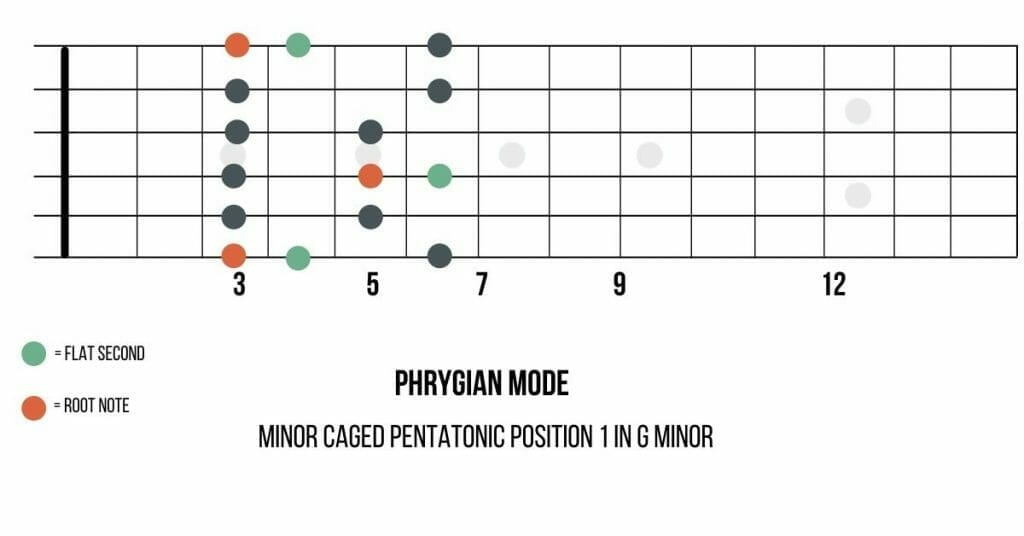
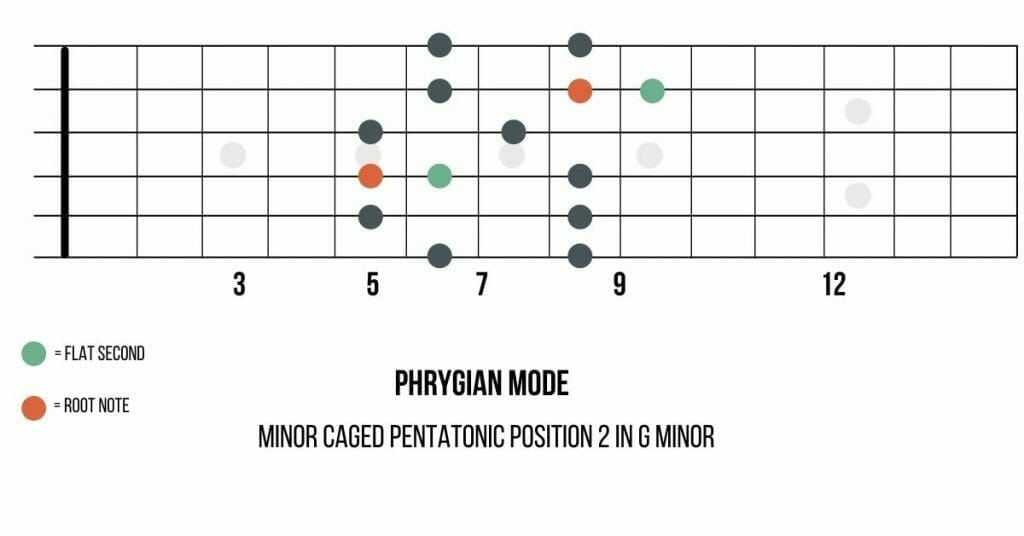
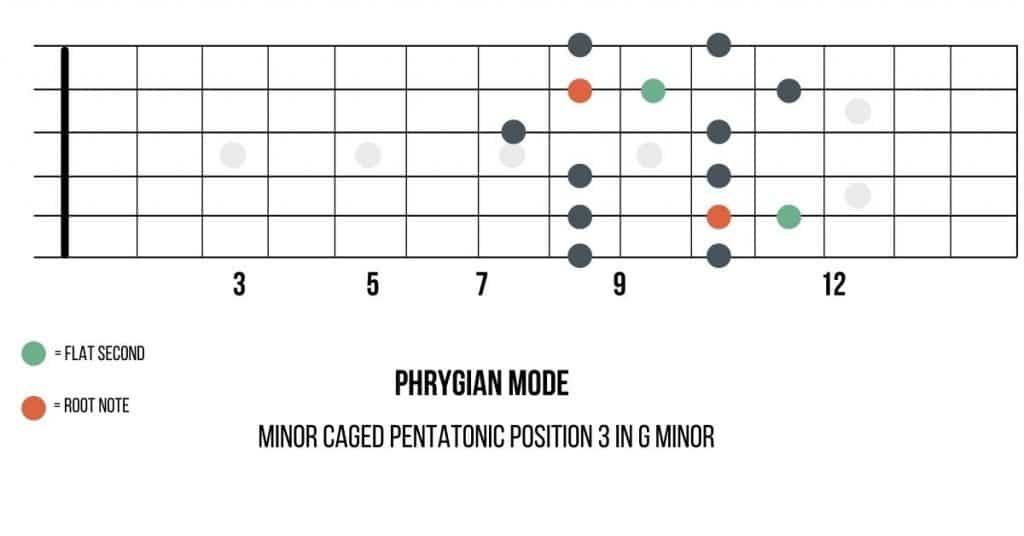
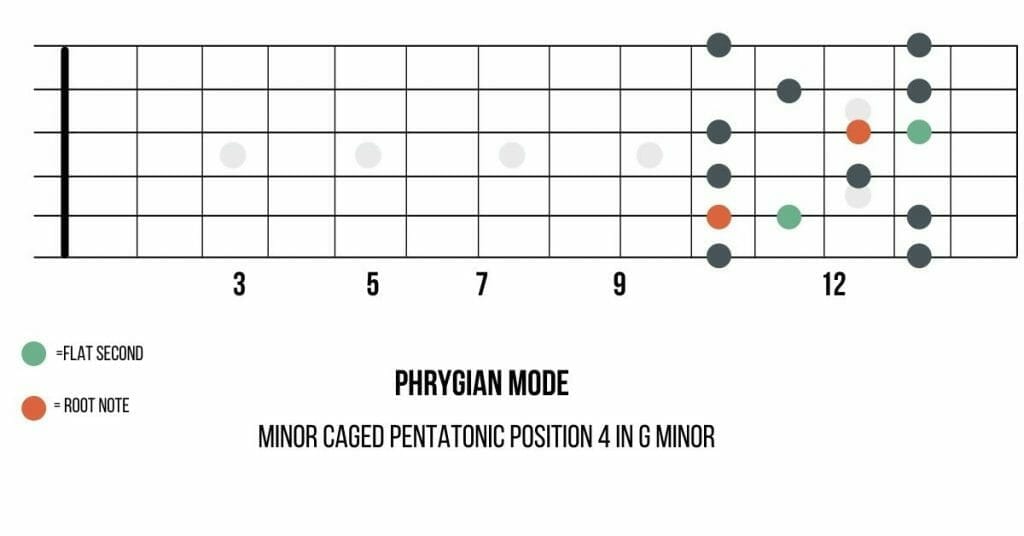
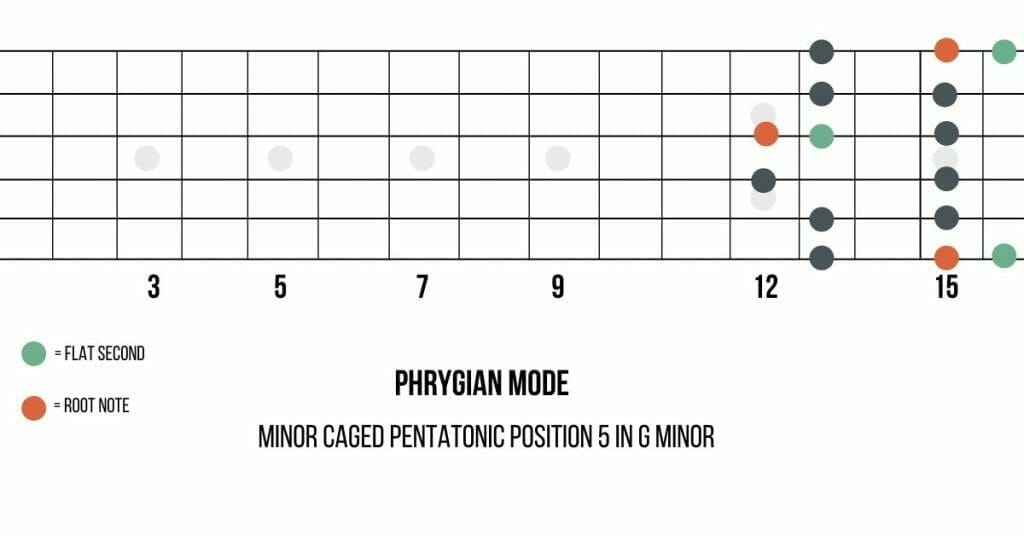
The Notes of the Phrygian Mode
Songs that Use The Phrygian Mode
The best way to feel what the Phrygian Mode sounds like is to hear it in action. So here are some popular songs that have used it effectively.
Kendrick Lamar “Humble” (WARNING: EXPLICIT)
Missy Elliott “Get Your Freak On”
Tame Impala “New Person, Same Old Mistakes”
What to Do Next?
The Phrygian mode isn’t used a lot in popular songwriting. However, this shouldn’t keep you from harnessing its dark, eerie, and mysterious vibe to add unique sounds to your music.
When used tastefully, it can elevate a melody into unexpected and fresh territories.
If you’re looking for new ideas on how to craft great melodies with Phrygian Scale and other scales, then please check out my article “How to Write a Melody That is Catchy and Awesome.”
Happy Songwriting!

